Gemstone Beads
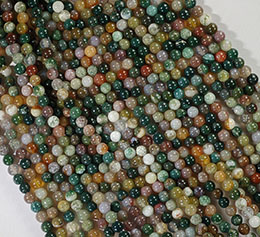
Gemstone Beads are one of the most popular gemstone sources for creative artists to make gemstone necklace
Gemstone Beads has a wide range of precious and semi-precious gemstone beads from around the world, cut and polished to make a perfect accent to any jewelry piece.
Gemstone beads are obtainable in different shapes to suit any style, such as oval, briolette, tube, tear drop, faceted, rough, and cabochons. As they come from a great variety of stones, so does their color. With the range of rainbow colors available, you are bound to find the perfect stone for you. Choose chunky, delicate, or freeform beads to make your creative beaded jewelry piece.
Gemstones with good lustre and good physical property with aesthetic value are always a popular choice.

Also, cut beads have also the approximate dimension like beads; still, the ends have four-sided figure, which creates a more tubular look. In fact, there are several other tiny beads with oval, square, hexagon, and other similar shapes. More variety of shaped beads is available on the market today due to the increasing popularity of these beads.
Moreover, the bigger the bead, the smaller the size of the bead then, the tiniest the bead, the bigger the bead size is. The dimension was used to specify the quantity of beads per every inch. However, this is no longer the instance, but will still provide you a reasonable, rough calculation of the actual bead size.
For example, if you use 11/0 beads next down to a ruler with the holes opposite on it, you will comprise with 11-12 beads (inch. Meanwhile, if you going to set 6/0 beads with the use of a ruler, you will enclose 6-7 beads (inch. In the past decades, beads were available in more irregular structure and approximately 11 beads (inch when using 11/0 beads.
During the Industrial Revolution, development in computerization made it feasible for massive production of bead, which is quite more uniform in their shapes. The consistencies of bead size roughly have one more bead (inch than before). However, some beads do not clasp their tone and fade, while others discard their skins that were add up after the bead was produced.
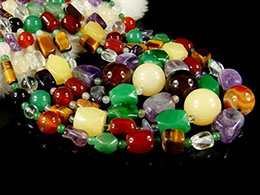
It is also significant when buying beads that you recognize what sort of bead you have finished, especially if you are planning to add the beads to those items that require laundry or body sweat that will affect. Since beads are quite popular today, several beads that are being produced now are always on the quick sale.
In addition to, beads used for producing multi-faceted structures, decoration, and applied through the use of sewing machines or hand, which came in a variety of sizes. Beads in 6/0 -15/0 in sizes are still being produced. While Beads in 16/0 and smaller beads are antique and no longer being made due to the tiresome man-hours needed to create them.
Also, traditional beads are usually more in high-priced compared with those being made today, especially sizes such as 22/0, which are so small you can barely perceive the beads. Sizes such as 11/0, 8/0, and 6/0 are quite fashionable because their bead holes are easy to perceive, and they are accessible in more dimensions and choices of color.
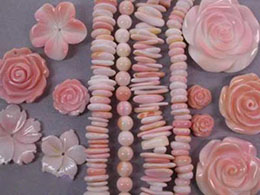
Conch Shell Beads --Beads Information:
These beads are originated after the ethnic people from Northeast India who reside near Burma and Nagaland. They are known as Nagas. They really adore conch shells and they have been using those types of beads for many centuries. It usually featured out a rolled, tapered form.
They have an extensive end-patterned with flat, smoothed bumps that curls into a weak, empty pocket and lastly with a U-shaped edge at the other end. In the ocean, these beads seize into living creatures. Once rinsed on a shore, humans pay attention to the noise of the ocean along their hollow centers, which make them to have natural horns and paint them as attractive items.
In fact, you can paint conches in your home to create shell art or beads. Moreover, it has a dazzling Tibetan way necklace aspect of coral, specifically with turquoise and coral as well as, complimentary lapis and brass beads. It also has a solid silver conch shell with small seed pearls and beads, as well.
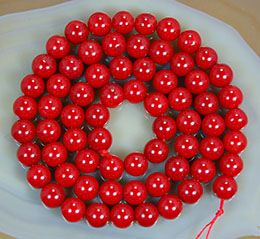
Coral Beads--Beads Information:
Coral beads are well-known to be utilized as a gem since ancient times. It is also a calcium-carbonate with a mark of carotene. Its color varies from white to red. It usually expands in branches that seem to be underwater trees. Most coral beads are usually found in Taiwan, Japan, and even Mediterranean Sea.
Most of these coral beads are colored. The main source of this antique coral was come from the Mediterranean Sea. It was often sold to some countries as a substitute for spices and other selling items that have high value mostly in Europe. Italy was quite well-known for its coral, most especially in North Africa.
In Yemen, beads coral were traded in branch form and it was formed into beads by the local tribes. Yemeni coral beads are well used and vary in color from salmon pink to dark red and orange. Though most of them have smoothed, barrel shape, these Yemeni coral beads inclined to have a disk-like or cylindrical nature.
Also, these beads often have white matrix. Intermittently, most beads are seems to be faceted. The facets were formed into the desired variety, and year after year, the facets could be used away and a smooth bead would be the result. Coral was also treasured in Yemen for its capability to shield the person from the evil eye.
It was often matched up with silver and composed as a variety of wealth. The Berber tribes and North Africans specifically intend to support more untreated shapes. Moreover, Branch coral beads were also popular. Next to the Mediterranean Sea, North Africans, especially Algerians and Moroccans had exceptional access to coral.
Often, coral could rinse up all along the beaches after storms. These branch corals were meticulously drilled by both hands in order to realize an extensive, unrefined tube-shaped coral bead. Most North Africans chose to make a string, which compose of amber, amazonite, shells, and silver and set to form a cabochon made in enamel and silver, as well.
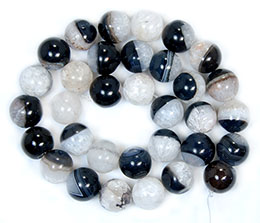
Druzy Beads--Beads Information:
Druzy beads are quite similar with some pendants. They are set in a way that shows an outstanding color and striking beads, as well. These remarkable beads are the result of structure caused by gasses that were rapt as these rocks were being generated and once the rock was harden and crystallizations were produced within the rock crater.
The tones and crystalline distinctions are usually caused by different minerals present at the structure of the rock. Checking of one of these remarkable beads is quite similar with mini universe. Just visualize the effort as well as, the time involved in causing this small gem that is nowadays.
Moreover, these beads are crystal-covered rock. Tiny quartz minerals form on the cavities or surface of the other rocks. Like for an example, geode is a crystal, which often forms. Once the cracked is open, geodes disclose crystals within. Druzy are tiny crystals, and which look like a sparkling stardust.
Druzy Cabochons are also obtainable in several dimensions and forms at great values. In addition to, "Druzy" specifically refers to a tiny crystal, which is produced within the stone in a massive number. Once the ground water takes dissolved silica and gets even filled into an absorbent area of rock, crystals might produce, as well.
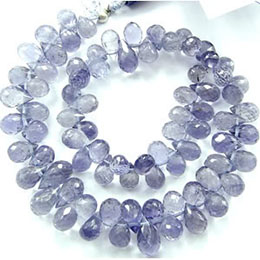
Iolite Beads--Beads Information:
Iolite is composed of a silicate of iron, alumina, magnesium, iron, has a vivid blue tone, and vitreous patina. This stone is extraordinary due to its dichroism. So, it is also referred as “Dichroite”. In fact, the name “iolite” was originated from the Greek word “ios”, which simply means "violet".
This blue silicate crystal appears as minerals or grains with igneous rocks as a product of magma contamination through aluminous sediment. It is sometimes referred as "water sapphire" because it is established in water minerals and commonly misguided for their top-graded form.
Most of these beads are cut in India, so there is indiscretion in form, dimension, and other attributes that must be expected. One of the famous attributes of this bead is its intense pleochroism. It has also the ability to modify their colors and still depends on the angle you’re looking for. This is the feature that makes Iolite so precious, as well.
It is generally acknowledged as "Vikings' compass" since these well-known mariners are detailed to use its iolite lenses to polarize the glow and then, established the accurate location of the sun, most especially during cloudy days. Iolite is believed to open individual’s supernatural talents and develop them as much as possible.
It is supposed to be exceptional to use on the crown chakras and third eye. It also said to develop inquisitiveness, motivate visions, and assist the wearer to deal with compulsion, such as alcoholism, and it facilitates in detoxifying the whole body as well as, maintaining temperance.
Physically, Iolite is useful to heal various diseases such as varicose veins, sore throats, and blisters. Iolite is usually found in countries such as India, Myanmar, Sri Lanka, USA, Brazil, and Madagascar. Also, Iolite is a captivating stone with a motivating history. The earliest mariners utilized Iolite as a compass to lead their way into the sea.
They distinguished that it would display various colors such as blue-violet. Ancients said that it could show creativeness, especially for the artist. Use this bead to find out the lost parts of inner’s treasure and yourself, as well. It is an exceptional bead for spiritualists, and assists in recuperating information from the past.
Iolite has a distinctive nature of color change once viewed from unusual angles. This color-change can display different tone such as grey, yellow, blue, and violet. During ancient times, it acts as a visual lens for most ancient Viking explorers and allowing them to take their journey farther than the other sea farers.
Iolite is the bead that symbolizes the 21st anniversary, most particularly in Western cultures. Some people believe it has the capability to convey visions, and agreement to relationships. Iolite is sometimes an overlooked component that provides beautiful simplicity, which combined a deep blue tone and tough resistance, as well.

Comment (0)